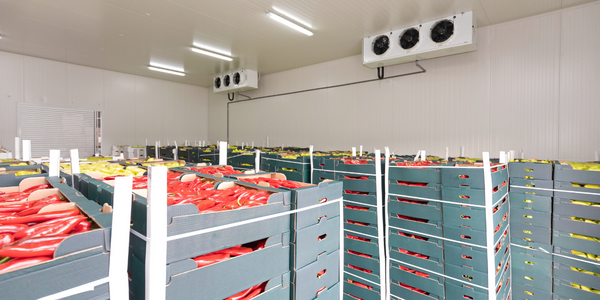Technology Category
- Infrastructure as a Service (IaaS) - Cloud Computing
- Infrastructure as a Service (IaaS) - Cloud Storage Services
Applicable Industries
- Cement
- Transportation
Applicable Functions
- Logistics & Transportation
- Maintenance
Use Cases
- Public Transportation Management
- Traffic Monitoring
Services
- Cloud Planning, Design & Implementation Services
- System Integration
About The Customer
Benefício Fácil is a third-party benefits management company based in Sao Paulo, Brazil. The company specializes in the management and distribution of employee benefits such as transportation passes and food and restaurant vouchers. With operations throughout the country, Benefício Fácil is among the largest distributors of transportation vouchers in Brazil. The company processes up to a million benefits a month from hundreds of different vendors, making speed and performance vital to their operations. In 2011, the company experienced a period of rapid growth and introduced a new feature that increased their data processing four times all at once.
The Challenge
Benefício Fácil, a Brazilian company specializing in the management and distribution of employee benefits, was facing a significant challenge. The company was experiencing rapid growth and had introduced a new feature that allowed clients to split monthly benefit orders into weekly ones. This feature increased data processing four times all at once, putting a strain on their existing infrastructure. At the time, Benefício Fácil was running its systems on Amazon Web Services, using in-house personnel to manage and maintain the platform. However, as system performance began to slow due to the increased processing burden, the company started looking for alternatives. They needed a solution that could offer scalability and performance without requiring extensive time spent on infrastructure management.
The Solution
Benefício Fácil turned to Google Cloud for a solution. They were particularly interested in Google App Engine, which was then a beta product. After some experimentation, the company switched to Google Cloud, using App Engine to process orders from a client-facing app and storing data on Cloud Storage. The move to Google Cloud immediately paid off. The system was able to easily absorb the increased processing burden, which had jumped from about 100,000 benefits processed monthly to 400,000. App Engine also automatically scaled to meet traffic spikes caused by voucher ordering or data loading, allowing Benefício Fácil to use only the computing resources it needed. This not only saved the company money but also freed up their team to focus on innovation rather than time-consuming maintenance tasks.
Operational Impact
Quantitative Benefit

Case Study missing?
Start adding your own!
Register with your work email and create a new case study profile for your business.
Related Case Studies.

Case Study
System 800xA at Indian Cement Plants
Chettinad Cement recognized that further efficiencies could be achieved in its cement manufacturing process. It looked to investing in comprehensive operational and control technologies to manage and derive productivity and energy efficiency gains from the assets on Line 2, their second plant in India.

Case Study
Airport SCADA Systems Improve Service Levels
Modern airports are one of the busiest environments on Earth and rely on process automation equipment to ensure service operators achieve their KPIs. Increasingly airport SCADA systems are being used to control all aspects of the operation and associated facilities. This is because unplanned system downtime can cost dearly, both in terms of reduced revenues and the associated loss of customer satisfaction due to inevitable travel inconvenience and disruption.

Case Study
IoT-based Fleet Intelligence Innovation
Speed to market is precious for DRVR, a rapidly growing start-up company. With a business model dependent on reliable mobile data, managers were spending their lives trying to negotiate data roaming deals with mobile network operators in different countries. And, even then, service quality was a constant concern.

Case Study
Digitize Railway with Deutsche Bahn
To reduce maintenance costs and delay-causing failures for Deutsche Bahn. They need manual measurements by a position measurement system based on custom-made MEMS sensor clusters, which allow autonomous and continuous monitoring with wireless data transmission and long battery. They were looking for data pre-processing solution in the sensor and machine learning algorithms in the cloud so as to detect critical wear.

Case Study
Cold Chain Transportation and Refrigerated Fleet Management System
1) Create a digital connected transportation solution to retrofit cold chain trailers with real-time tracking and controls. 2) Prevent multi-million dollar losses due to theft or spoilage. 3) Deliver a digital chain-of-custody solution for door to door load monitoring and security. 4) Provide a trusted multi-fleet solution in a single application with granular data and access controls.

Case Study
Vehicle Fleet Analytics
Organizations frequently implement a maintenance strategy for their fleets of vehicles using a combination of time and usage based maintenance schedules. While effective as a whole, time and usage based schedules do not take into account driving patterns, environmental factors, and sensors currently deployed within the vehicle measuring crank voltage, ignition voltage, and acceleration, all of which have a significant influence on the overall health of the vehicle.In a typical fleet, a large percentage of road calls are related to electrical failure, with battery failure being a common cause. Battery failures result in unmet service agreement levels and costly re-adjustment of scheduled to provide replacement vehicles. To reduce the impact of unplanned maintenance, the transportation logistics company was interested in a trial of C3 Vehicle Fleet Analytics.







